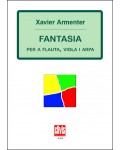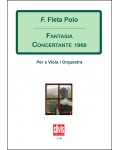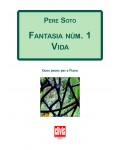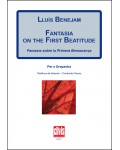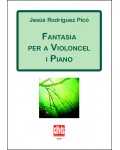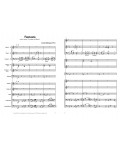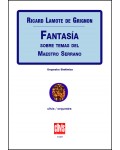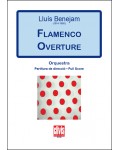
No products
Prices are tax included
Product successfully added to your shopping cart
There are 0 items in your cart. There is 1 item in your cart.
- English
- Castellano
- Català
List of products by supplier: CLIVIS Publicacions
-
-
Fantasia
Edition: PrintedThe title Fantasia reflects the free use of the different formal resources used. We can therefore recognise the Variation, the Fugue and the structural elements of the Sonata form that are essential in structuring a work of certain complexity.
19,00 € -
Fantasia
Edition: DigitalThe title Fantasia reflects the free use of the different formal resources used. We can therefore recognise the Variation, the Fugue and the structural elements of the Sonata form that are essential in structuring a work of certain complexity.
11,05 € -
Fantasia Concertante 1968
Edition: DigitalThe piece Fantasia Concertante, which is structured as a single movement, fits perfectly into the fantasia genre: a free discourse from the solo instrument which, in spite of being based on an initial theme, includes various themes by way of improvisation.
18,15 € -
Fantasia núm. 1 - Vida
Edition: DigitalTwo pieces for piano of two moments quite distant in time, not so much in terms of style.
7,27 € -
Fantasia on the First Beatitude
Edition: DigitalThis work is brilliant, energetic, at certain moments impressionist, at others polytonal or influenced by the language of jazz, it clearly evinces the spirituality of its composer.
23,27 € -
Fantasia on the First Beatitude
Edition: PrintedThis work is brilliant, energetic, at certain moments impressionist, at others polytonal or influenced by the language of jazz, it clearly evinces the spirituality of its composer.
23,27 € -
Fantasia per a violoncel i piano
Edition: DigitalThe “fantasy” concept includes that of a movement-less piece, with a very free format that is playful in its use of contrasts, combining this initial theme with more dynamic fragments. In spite of this thematic reappearance, the work does not correspond to the rondo form, but the formal freedom is the one that commands.
7,85 € -
Fantasia sobre l'òpera "El viatge de Marlow"
Edition: DigitalFantasía covers some of the themes from the opera El viatge de Marlow, primarily the theme of a journey that appears right from the beginning of the piece and is its main theme. This motif leads to others that refer to the landscape of darkness, to the forest or to the grotesque characters that survive in these inhospitable surroundings.
21,24 € -
Fantasía sobre temas del Maestro Serrano
Edition: DigitalRicard Lamote de Grignon does not use the composer José Serrano's most popular melodies to do Fantasía, but places less well-known fragments on the stave.
18,15 € -
Flamenco Overture
Edition: DigitalComposed in 1962, the Flamenco Overture is one of the orchestral works that Benejam wrote once he had settled in Birmingham (Alabama), and reflects the Hispanic character of other works that he also composed during those years such as Baile (Spanish Dance), the Iberian Preludes and Lorqueña.
18,15 € -
Flamenco Overture
Edition: PrintedComposed in 1962, the Flamenco Overture is one of the orchestral works that Benejam wrote once he had settled in Birmingham (Alabama), and reflects the Hispanic character of other works that he also composed during those years such as Baile (Spanish Dance), the Iberian Preludes and Lorqueña.
31,20 €


